O is for Observational Drawing
on learning to see and how to bypass perfectionism with positive reinforcement
Just as Sherlock has Moriarty and the Powerpuff girls have Mojo-Jojo, my own personal nemesis is observational drawing. I have written about this before and since then I have tried several times to slay this creative demon, but I never quite managed. Like with all new skills, learning to observe is hard, and I found my tentative first drawings discouraging. As I wrote a few weeks ago, my fear of being rubbish kept me from sticking to my practice.
So when I saw Fran Meneses talk about positive reinforcement and how placing a brightly coloured sticker on a selfmade chart helped her in achieving her goal, I had to try this myself. Because why wouldn’t we give ourselves tiny rewards for doing the things that are difficult?
Why exactly, do I find observational drawing so challenging? The first assignment on the Children’s Book Illustration MA is drawing from life, for the entire first semester. I was one of the few people in my class who didn’t have a background in illustration (mine is in graphic design) and I instantly felt miles behind on everyone else. Comparing myself to my classmates and thinking observational drawing had to be done in a certain way kept me from seeing and understanding the true intention of the assignment. It’s wasn’t about drawing, it was about learning to see.
In ‘Drawing for Illustration’ Martin Salisbury writes about an assignment for undergraduates who have to draw, from memory, at least ten things they have seen in the last 24 hours. Then the undergrads are asked to now draw these ten things from observation. The results are striking in showing how little we actually see and remember from the world around us. By drawing something from observation we memorise the object or thing in a different way. Salisbury writes: “This project provides an important lesson in how to begin to distrust the those insistent messages from the brain, trying to tell us what we know, as it does battle with our eyes, which are trying to lead us to a different kind of knowing - visual knowing. No tricks or clever techniques can replace this kind of knowledge.”
Every artists has a different way of approaching observational drawing. JooHee Yoon uses one material, like a black pencil or pen, and focusses on patterns and lots of details.
In this Patreon post Rebecca Green writes about also struggling with drawing from observation on location. Instead she draws from memory in her visual journal, focussing on moments, memories and small joys. Another way she draws from observation is to focus on the details and how she can combine these details to create a narrative.
Lilla Turi is all about action, she draws quickly with fast marks, bold shapes and bright colours. She loves to capture the atmosphere in busy cafe’s and other crowded public places. There is so much joy in her drawings.
Frances Ives is almost meditative in her practice and can sit for actual hours in the same spot, drawing luscious nature scenes. Where I find it hard to focus on seeing for 30 minutes, Frances will gladly sit somewhere and draw until the sun goes down. Her sketchbooks are full of moody skies and delicious landscapes.
So what do I see? I’m not quiet sure yet. Possibly shapes, textures and humour. Silliness, like my cat drawings. The small things that we sometimes forget to appreciate. For now I know that it’s important that I draw, not what I draw. I want to draw from observation until I start to love it, or until it is such an ingrained habit that I don’t have to think twice about doing it.
The Positive Reinforcement Chart
Making myself a positive reinforcement chart has turned my battle with observational drawing into a game. Positive reinforcement is a constructive parenting or teaching method that, instead of punishing bad behaviour, rewards good behaviour, making it more likely that the good behaviour will be repeated. I will put this to the test with cat stickers.
Here are my rules:
For every 30 minutes of uninterrupted observational drawing, that means really looking and concentrating, I get 1 sticker.
For every 10 stickers, so 5 hours of drawing, I get a reward.
(I have had my eyes on Tove Jansson’s Moomin books, the special collector’s editions by Sort of Books and instead of just buying them or asking for them on birthdays or other special occasions, I decided I only get to have them when I have put in the work.)
I’ve been out a couple of times already, earning myself three stickers. The first time was harder than I anticipated, but the second time went a lot better. I decided to really pair down my materials and took only a small notebook that fits in my back pocket and a free pencil from a well known Swedish furniture shop. During a long walk I drew reeds, grass and tiny thumbnails whilst listening to an audiobook to keep my mind just busy enough to not start complaining at me. I found that focussing on the details, how leaves overlay each other, how reeds are brown at the base but get greener towards the top, what a daisy looks like when the bud is still closed, helped me be more practical about my sketches. I was getting the details down and studying something instead of focussing on wether or not I was making a good drawing. Going back home I was excited about celebrating this small win by placing another sticker on my chart.
Hockney says in ‘A Bigger Message: Conversations with David Hockney’:
“When we were first here, the hedgerow seemed a jumble to me. But then I began to draw them in a little Japansese sketchbook that opened out like a concertina. (…) I filled the sketchbook in an hour and a half. After that, I saw it all more clearly. After I’d drawn the grasses, I started seeing them. Whereas if you’d just photographed them, you wouldn’t be looking as intently as you do when you are drawing them, so it wouldn’t affect you as much.”
I intend to do a series of post about this new adventure of mine, exploring more locations, but also self portraits, still lives and visual journalling. If you would also like to try the positive reinforcement chart, let me know in the comments and I’ll make a digital one to share.
As always, thanks for being here. See you in the next one!
Maris
Links:
Fran Meneses’s video mentioning positive reinforcement
My favourite posts on observational drawing from Rebecca Green’s Patreon.
Pushing past the uglies
Sketchbook paintings from memory
Minneapolis Sketchbook + Two drawing truths I'm always rediscovering
Lilla Turi. You can find more glorious drawings available in her shop
Frances Ives. Frances has made several zines from her observational drawing sketchbooks, highly recommend.


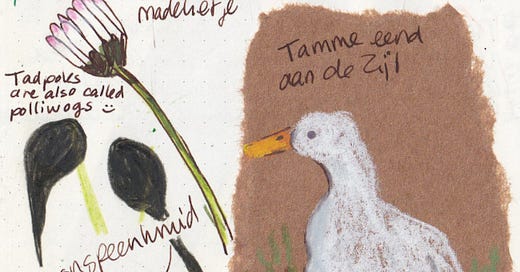



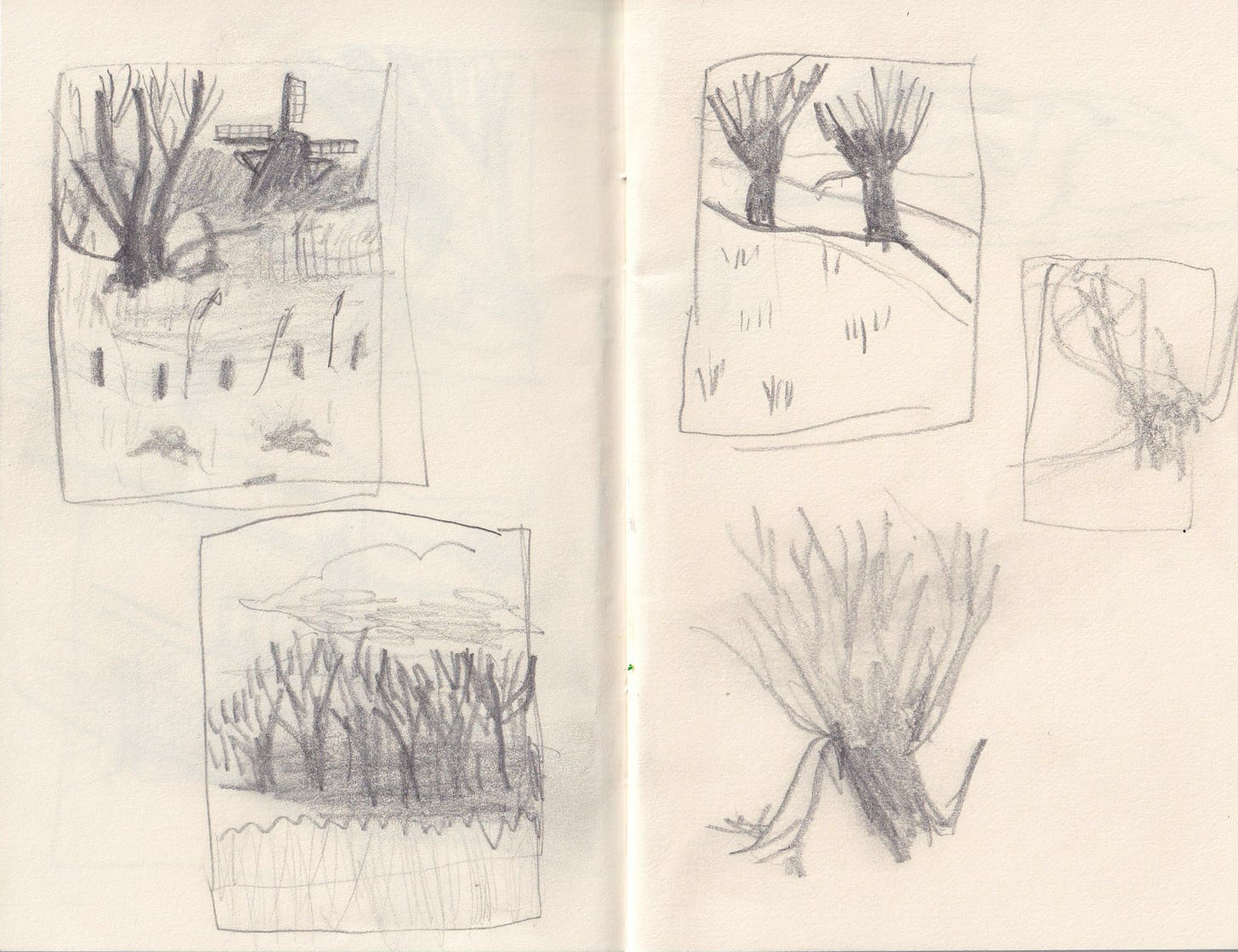
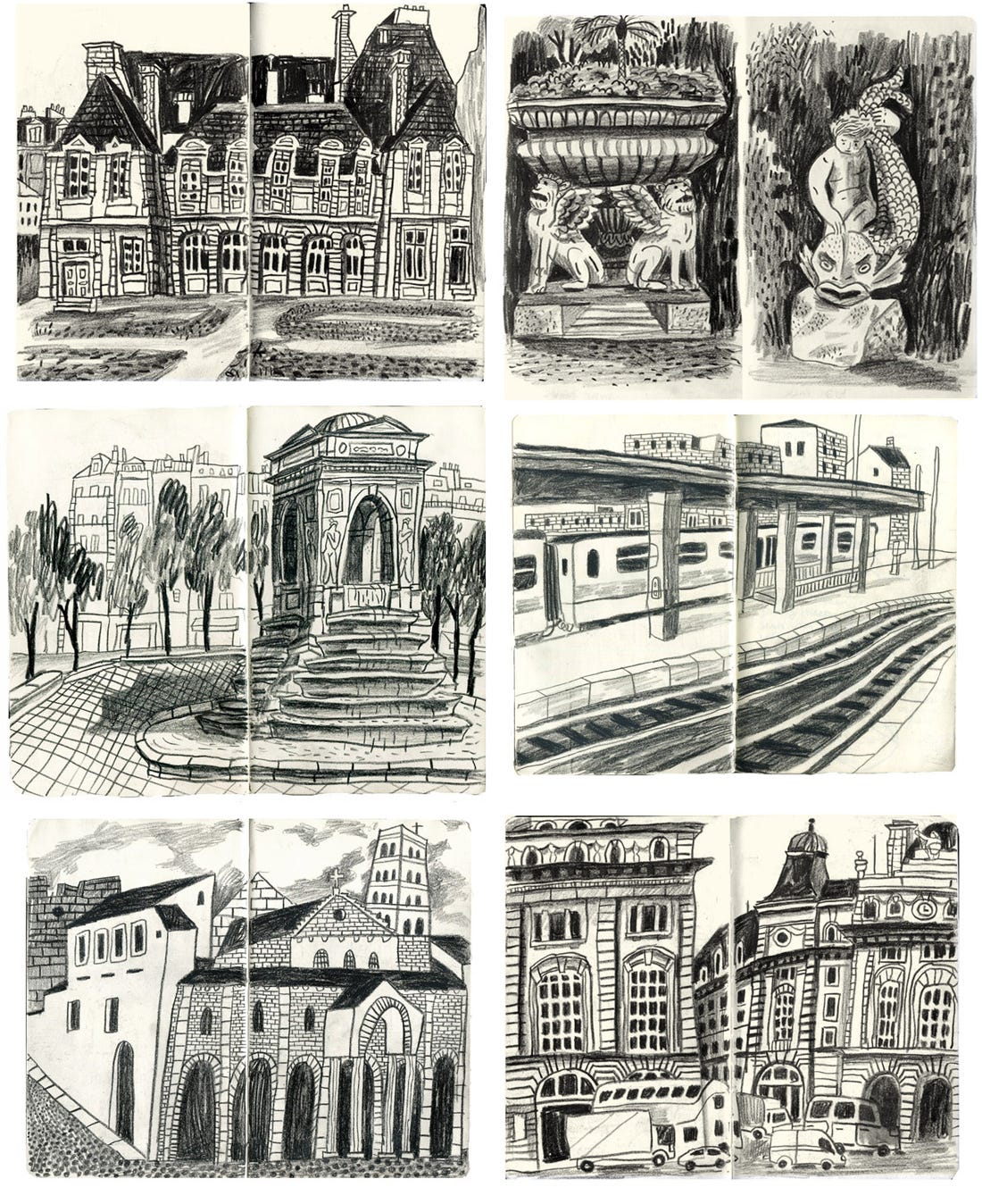
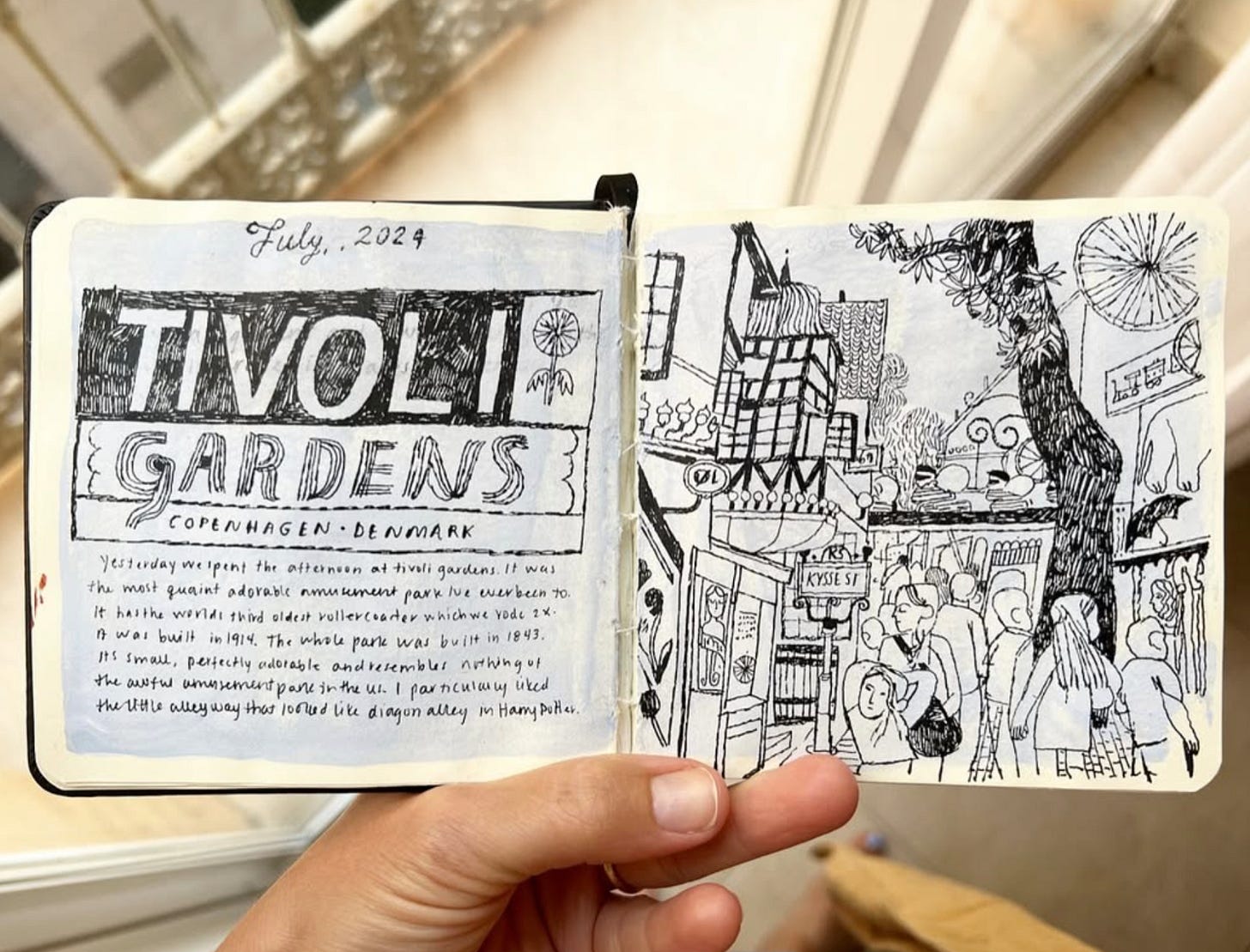
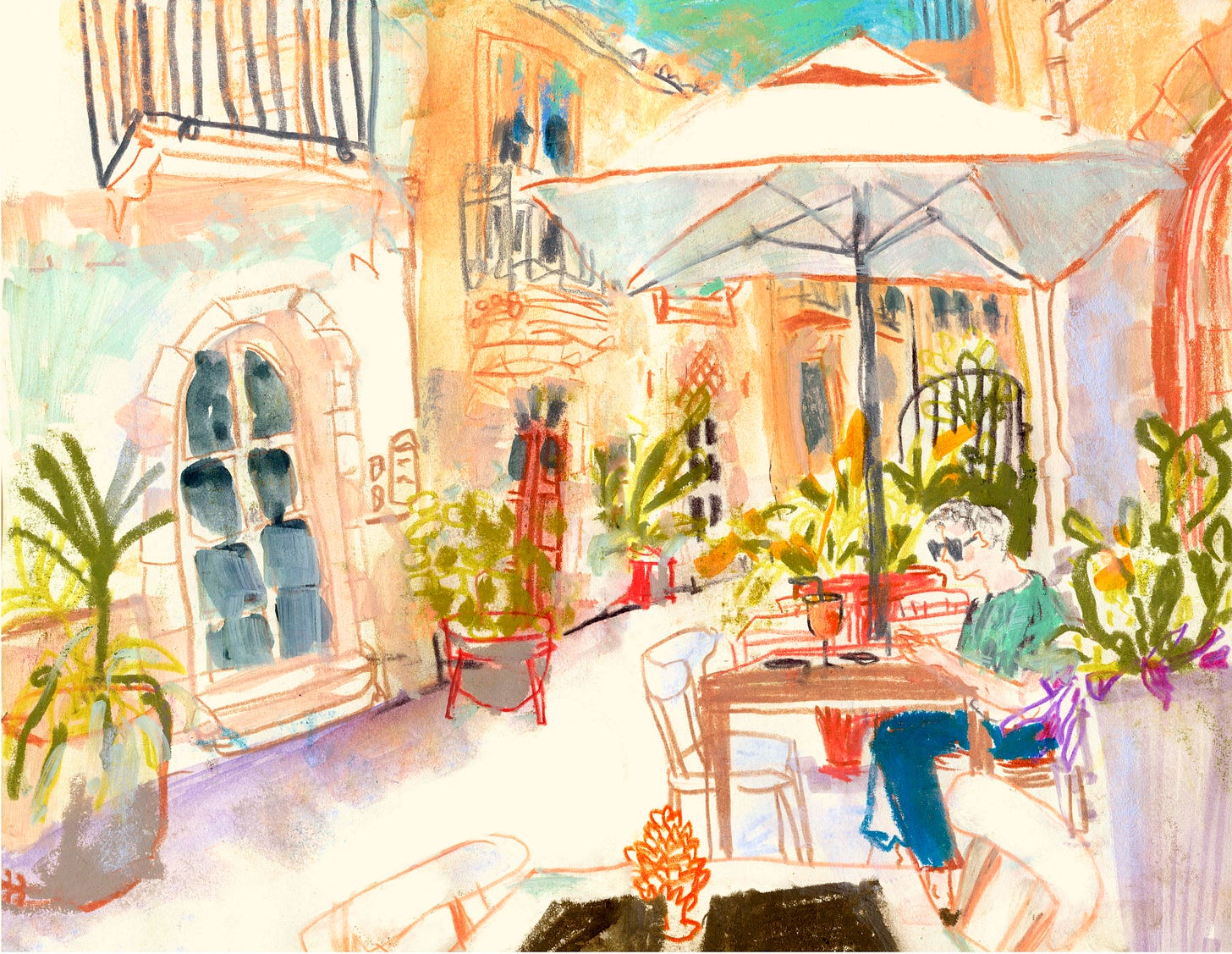
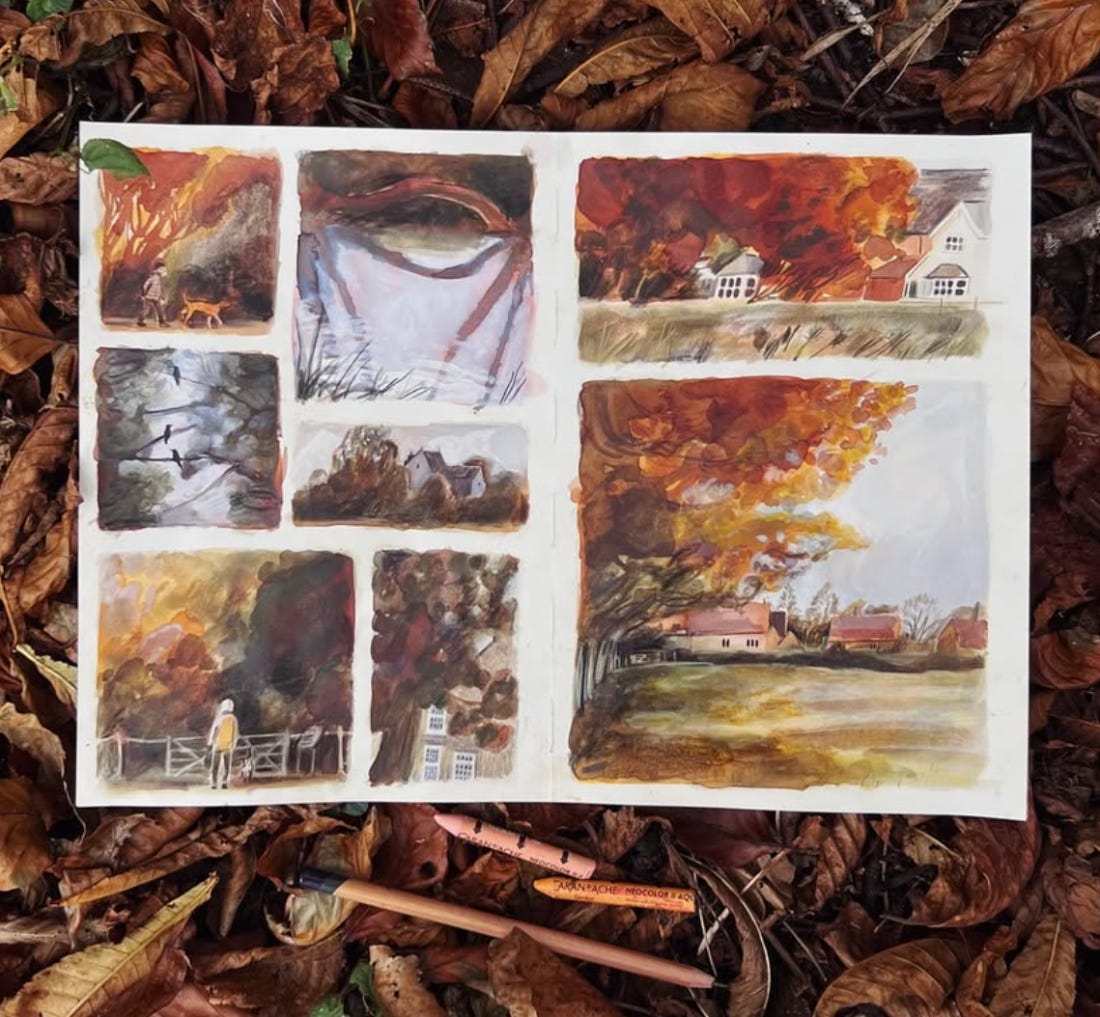
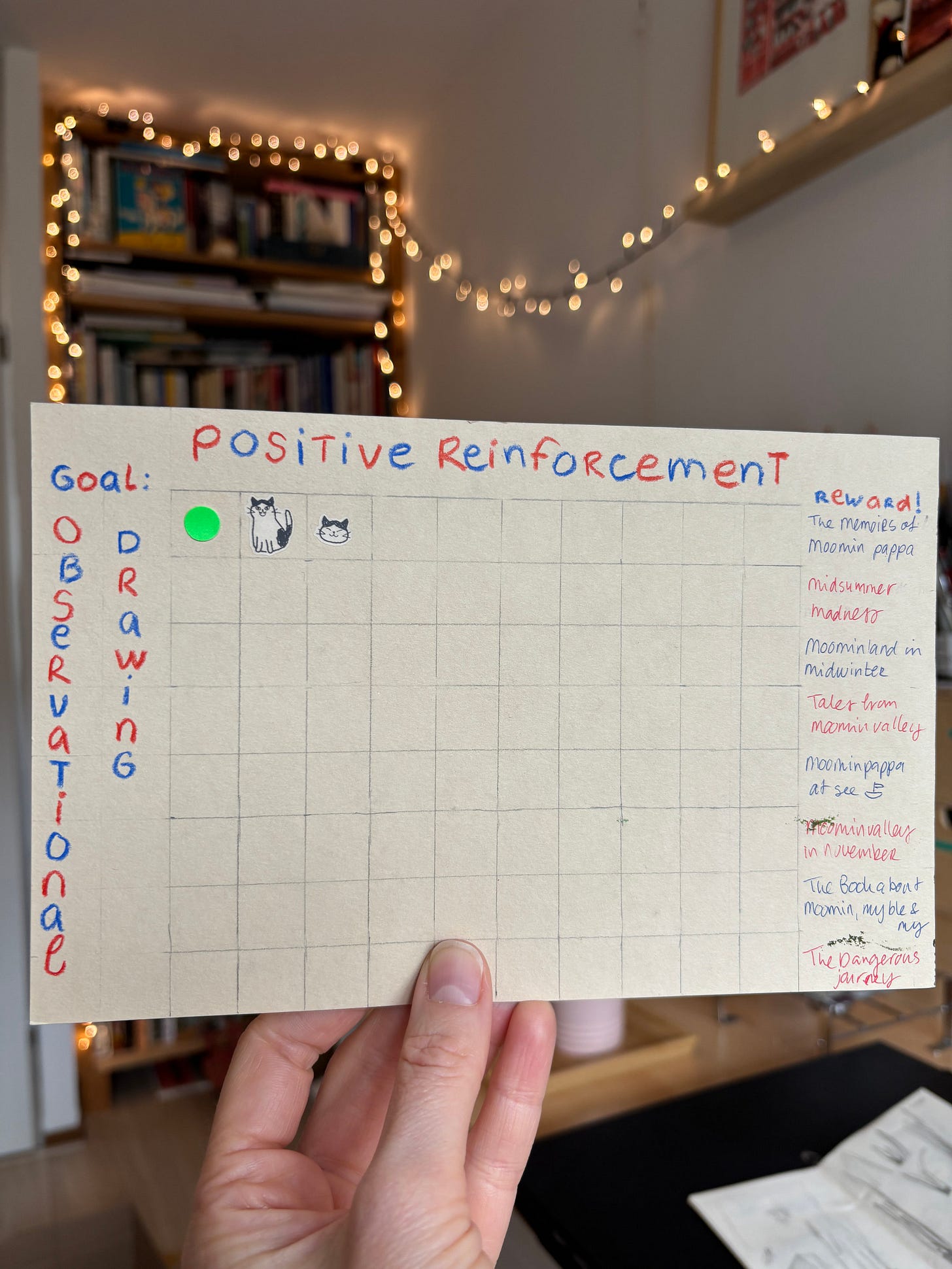
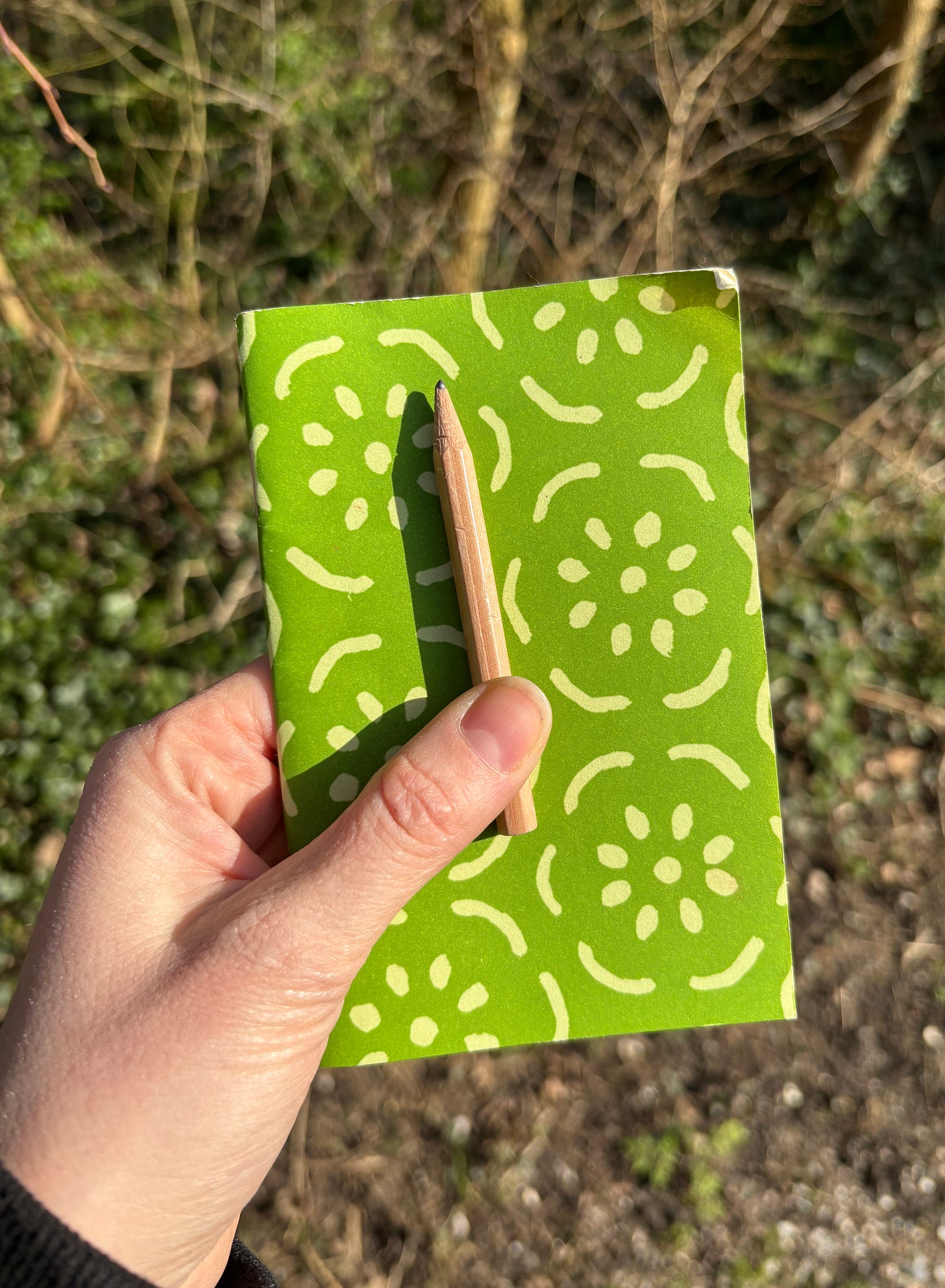
I love your positive reinforcement chart - what a great idea! I have a sign hanging in my studio which says, "Carefully observed, loosely rendered", which is my mantra whenever I'm drawing or painting. It always comes down to really, properly, looking so you can see clearly
love this. Sometimes I take especially big-sized paintsticks or other materials which make thick lines ,or paint wet on wet with inks or watercolour to not be able to get stuck in details.And make it impossible to be too accurate and realistic. It' s fun.